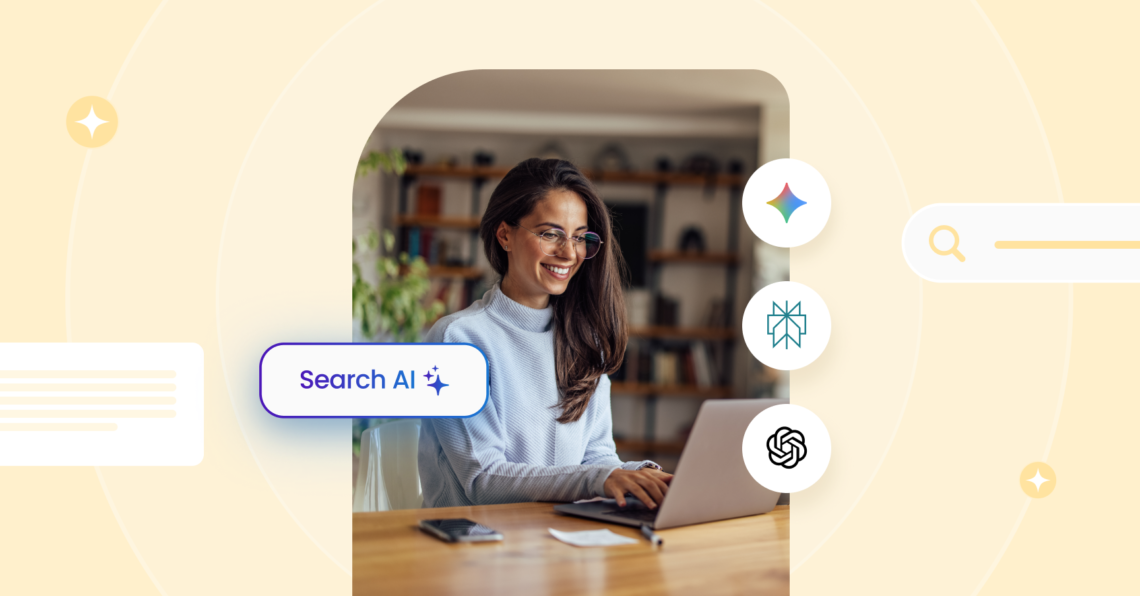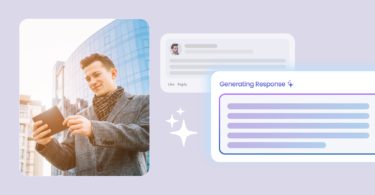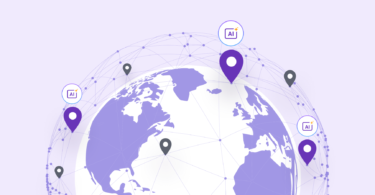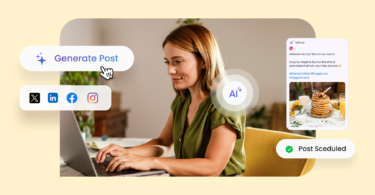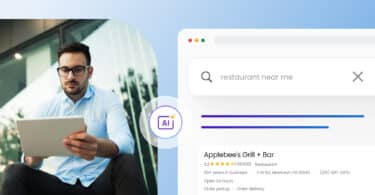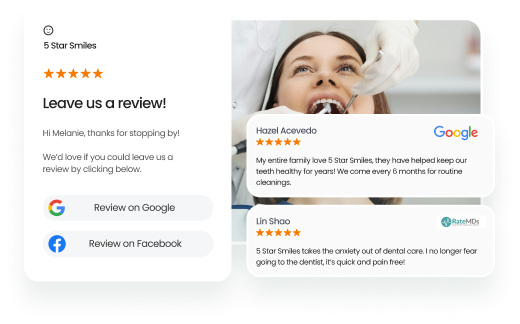AI visibility tools help businesses understand how often their brand appears in answers generated by platforms like ChatGPT, Gemini, Perplexity, and Claude, and where information may be missing, outdated, or inconsistent.
Summary
AI-generated answers now influence customer decisions across nearly every industry. And according to McKinsey’s State of AI: Global Survey 2025, companies have rapidly shifted from experimental pilots to scaled, production-level AI, increasing the need for clarity around how brands are represented in these systems. Despite this shift, many organizations still lack insight into when and how they are mentioned, overlooked, or outperformed by competitors in AI-driven search experiences.
This blog outlines the top AI visibility tools for 2026 that help teams monitor brand presence, identify visibility gaps, and strengthen performance across answer engines, with Birdeye Search AI offering the most complete view into how brands surface across leading AI platforms.
Table of contents
What makes a great AI visibility tool?

An effective AI visibility tool in 2026 should deliver clear, reliable insights that help businesses understand how they appear across AI answer engines. Here are the essential criteria to evaluate.
1. Multi-platform coverage
A strong AI visibility tool tracks how your brand appears across major AI systems such as ChatGPT, Google AI Overviews, Perplexity, Gemini, Claude, Copilot, and smaller emerging platforms. Each engine uses different sources, so broad coverage helps eliminate blind spots and gives brands a complete view of their online presence.
2. Real-time, granular insights
Top tools surface real-time or near-instant details about mentions, citations, and keyword activity in AI-generated answers. This includes seeing how your brand and competitors are referenced, along with alerts and on-demand reports. Granular data, such as prompt patterns, direct citation counts, and sentiment, helps teams adjust content and messaging at the right moment.
3. Competitor benchmarking
A useful AI visibility platform does not just measure your visibility. It also compares your performance against close competitors across multiple prompts, platforms, and topic clusters. Features like share of citations, frequency trends, and gap identification show where you are strong and where others appear more often.
4. Actionable recommendations
The best AI visibility tools move beyond monitoring. They provide suggestions for improving visibility, strengthening content, filling citation gaps, and refining prompts. These recommendations help teams make practical updates without relying on guesswork.
5. Seamless integration
For smooth workflows, the tool should connect with your existing systems, including CRM, CMS, analytics such as GA4, and broader marketing platforms. API access, data exports, and automation help teams bring AI visibility data into ongoing reporting and planning.
A tool with these capabilities helps businesses understand how AI systems reference their brand, catch shifts in visibility early, and adjust content with confidence.
Top 7 AI visibility tools in 2026
Choosing the right AI visibility tool comes down to how well it can surface clear, reliable insights without adding complexity to your workflow. Each platform offers a different mix of monitoring depth, platform coverage, and reporting detail, so it’s important to understand what each specializes in.
The list below highlights the top options and what businesses can expect from each before digging into the full feature breakdown.
| Tool | Estimated pricing | Platforms covered | Core strengths |
| Birdeye Search AI | Mid-tier to enterprise | ChatGPT, Gemini, Perplexity, and more | Prompt insights, AI visibility tracking, citation intelligence, accuracy checks, sentiment scores, AI agent execution |
| SE Ranking | Mid-tier to enterprise plans | ChatGPT, Perplexity, Gemini, Google AI Overviews | AI brand tracking, competitor coverage, citation monitoring, automated reporting |
| Semrush GEO | Premium add-on | ChatGPT, Gemini, Perplexity, Google AI Overviews | Historical benchmarks, answer engine optimization insights, keyword triggers |
| Ahrefs Brand Radar | Subscription add-on | ChatGPT, Perplexity, Gemini, Google AI Overviews | Competitor benchmarking, citation tracking, visibility patterns |
| Peec AI | Lower to mid-tier | ChatGPT, Gemini, Perplexity | Content optimization suggestions, pitch workspace, actionable recommendations |
| Clearscope | Premium content suite | ChatGPT, Google AI Overviews, Perplexity | GEO-backed content workflow, content inventory tracking, topic coverage insights |
| ZipTie | Mid-tier to enterprise | ChatGPT, Gemini, Perplexity, Google AI Overviews, Claude | Fast alerts, in-depth filters, AI Success Score, granular analysis |
1. Birdeye Search AI: Complete visibility across AI answer engines

Birdeye Search AI is built for brands that want a clear picture of how often they appear in AI-generated answers across platforms like ChatGPT, Gemini, Perplexity, and more. It shows when your brand is mentioned, how it is described, and where it may be overlooked, giving teams a reliable view of their presence across the AI ecosystem.
The platform goes beyond tracking visibility. It reveals the prompts customers use, the themes AI engines associate with your business, and the citations that influence how these systems form answers. Brands can also compare visibility across competitors, regions, and locations to understand where they lead and where inconsistencies may be hurting performance.
What sets Birdeye apart is its built-in AI agents. Instead of leaving teams to interpret data on their own, Search AI identifies gaps, explains what needs to be fixed, and can automatically make updates at scale. It delivers monitoring, insights, and execution in a single unified workflow, ideal for businesses seeking accuracy and consistency across every AI touchpoint.
Key capabilities include:
- Prompt monitoring to identify demand, themes, and real customer questions
- Cross-platform visibility tracking across ChatGPT, Gemini, Perplexity, and more
- Ranking insights for brand and location performance at global and local levels
- Sentiment analysis showing how AI engines describe your business
- Citation intelligence with high-impact sources recommended by AI
- Accuracy checks across business information fields and platforms
- Prioritized recommendations detailing what to fix and why it matters
- AI agents that execute improvements automatically across locations
This Birdeye AI visibility tool is ideal for multi-location brands and teams that want clear, reliable AI visibility paired with automated action, not just monitoring.
2. SE Ranking: All-in-one AI brand and competitor tracker
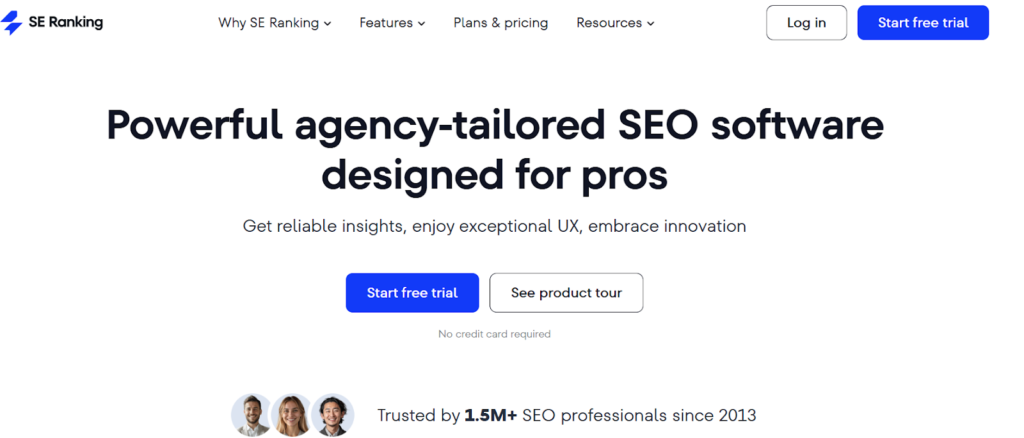
SE Ranking offers a broad set of tools for teams that want visibility across both traditional search and AI-driven answers. Its LLM monitoring suite shows how brands appear in ChatGPT, Perplexity, Gemini, and Google AI Overviews.
Key capabilities include:
- AI brand tracking across major platforms
- Competitor monitoring and side-by-side comparison
- Citation tracking for source visibility
- Automated reports for weekly or monthly updates
- AIO research for understanding AI-driven keyword patterns
This tool works well for marketing teams that want a single platform for both SEO and AI visibility.
3. Semrush GEO: AI search optimization with historic benchmarks
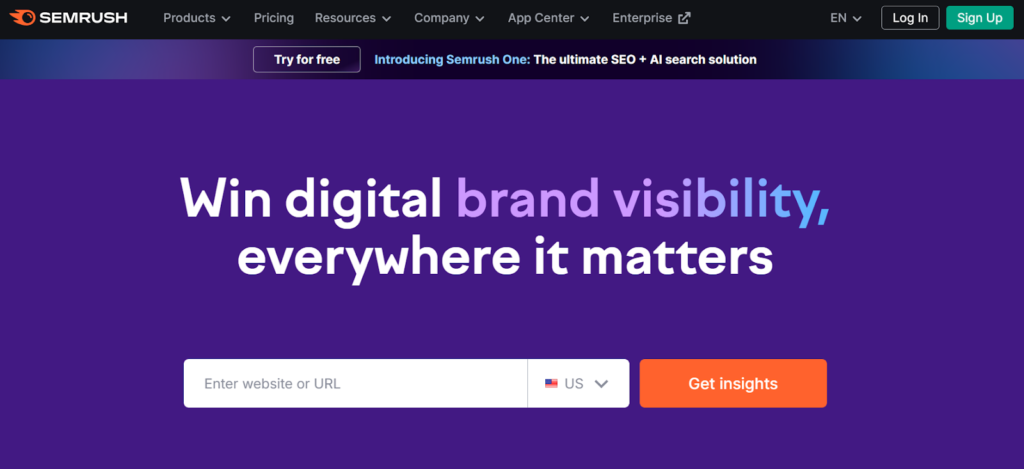
Semrush’s GEO offering pulls from a large historical index, giving teams context on how visibility shifts over time. It helps identify which keywords trigger AI-generated answers, how often a brand appears, and how performance compares against past benchmarks.
Key capabilities include:
- Historic snapshots of AI answer trends
- Prompt and keyword trigger analysis
- Visibility scoring over time
- Competitive intelligence
- GEO reports for planning content updates
This is ideal for teams that want long-term trend tracking and context for each visibility change.
4. Ahrefs Brand Radar: Deep competitor benchmarking

Ahrefs has always been known for competitive analysis, and Brand Radar applies the same model to AI-driven answers. It focuses on citation shares, competitor gaps, and patterns across multiple answer engines.
Key capabilities include:
- Citation clustering that shows who appears most often
- Visibility share for each competitor
- Cross-platform AI monitoring
- Detailed trend summaries
- Clear identification of missed mentions and gaps
This tool is a good fit for brands that want to understand how their category is represented across AI responses.
5. Peec AI: Actionable suggestions for content optimization

Peec AI is a lighter, content-focused solution that recommends practical steps for improving visibility in AI responses. The platform goes beyond monitoring by offering smart suggestions and a pitch workspace for content teams.
Key capabilities include:
- Recommendations for strengthening content and clarifying topics
- Tracking of how AI engines interpret key pages
- Pitch workspace for drafting updates
- Coverage summaries for priority keywords
Peec AI works best for editorial and content teams looking for specific improvement guidance.
6. Clearscope: Content creation backed by GEO analytics
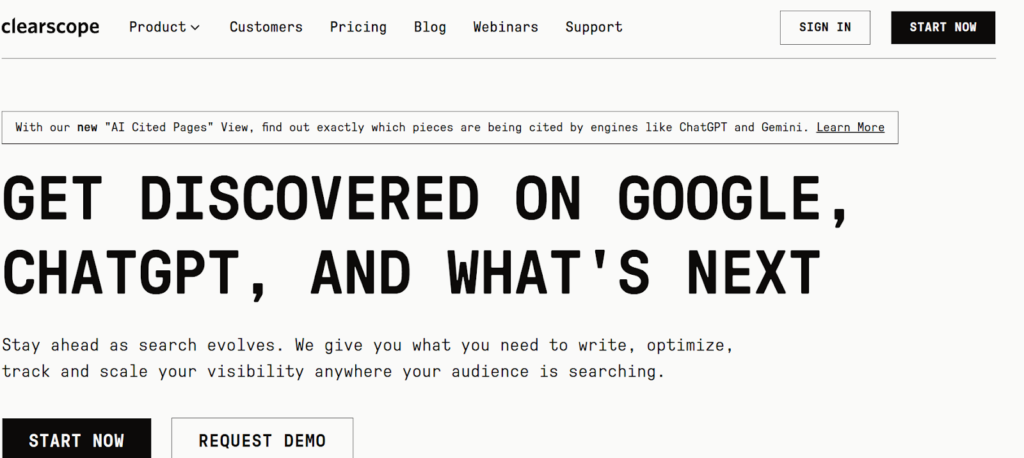
Clearscope builds on its content optimization reputation with new GEO-backed insights. It tracks content inventory and shows which topics need updates to stay aligned with AI answer trends.
Key capabilities include:
- Visibility insights tied directly to content workflows
- Inventory tracking for existing pages
- Suggestions based on AI answer coverage
- Topic analysis for future content planning
This tool is ideal for content-focused teams adjusting to how AI systems surface information.
7. ZipTie: Granular analysis and real-time alerts

ZipTie offers detailed filtering, real-time alerts, and a clear AI Success Score to show visibility strength at a glance. It supports teams that want high-frequency monitoring and immediate notifications.
Key capabilities include:
- Fast visibility alerts for significant changes
- Detailed filters for prompts, topics, and engines
- AI Success Score for tracking performance
- Side-by-side comparisons across all monitored platforms
ZipTie is best for teams that need high-speed awareness across AI engines and want granular filtering options.
How to pick the best AI visibility tool?
Choosing the right AI tool for visibility comes down to how well it supports your brand’s goals and daily workflow. Here are the points to weigh before committing to a platform:
1. Look for accurate insights, not generic summaries
The tool should break down what’s happening across your online presence with clear themes, sentiment, and patterns. If it only paraphrases reviews or social mentions, it won’t help you understand what actually needs attention.
2. Check how well it works with your existing systems
Smooth connections with your CRM, website, social channels, and review platforms save time and prevent manual work. A strong visibility tool should pull everything into one place, so you’re not jumping between dashboards.
3. Evaluate the quality of its AI suggestions
The best tools don’t just show data, they suggest actions. Look for AI that can point out issues, highlight opportunities, and recommend steps based on real patterns in your feedback, content, and listings.
4. Make sure it supports review, social, and listing performance together
Visibility is not limited to one channel. The tool should give you a full view of search appearance, reviews, and social engagement. This helps you understand which areas are helping (or hurting) your online reach.
5. Review the response and content automation features
AI should help you move faster without sacrificing accuracy. Features like on-brand review replies, AI-generated social posts, and automated listing updates reduce effort and keep your brand consistent.
6. Look for multi-location support if you operate across regions
Brands with 10-10,000+locations need visibility broken down by region. Pick a tool that surfaces insights across all locations and shows where performance differs.
7. Consider how simple the interface is
If the platform feels clunky or overwhelming, your team won’t use it. A clean layout, clear labeling, and easy filters make a meaningful difference in day-to-day use.
8. Check real results from similar businesses
Case studies reveal how well the tool performs in real scenarios. Pay attention to improvements in reviews, search views, and customer engagement, not vague claims.
9. Look for strong support and onboarding
A good tool should come with helpful training, a responsive support team, and resources that make adoption smooth.
10. Confirm that the tool can scale as you grow
Your needs today might be different from your needs a year from now. Choose a platform that can support more locations, higher volume, and deeper insights as you expand.
Choosing the right AI visibility tool comes down to finding a platform that provides clarity, reduces manual work, and helps your brand stay consistent wherever your customers find you.
Frequently asked questions on AI visibility tools
AI visibility focuses on how clearly AI systems understand, reference, and use your information, while SEO focuses on ranking in traditional search results.
AI engines rely on the data they can find, so inconsistent profiles, outdated content, or weak citations can lead to incorrect interpretations.
Most brands review quarterly, but high-volume or multi-location businesses benefit from monthly checks to catch gaps early.
Birdeye Search AI tracks how AI engines cite and interpret your brand, while most tools focus only on keyword rankings or traditional SEO metrics.
Birdeye Search AI analyzes each location separately, revealing gaps or inconsistencies that other platforms often miss.
Visibility platforms scan AI responses across engines and track when, where, and how often a brand is referenced in generated outputs.
Yes, clear, consistent, and well-cited information increases the likelihood of being included in AI summaries, suggestions, and task-based responses.
Conclusion
As AI-driven discovery reshapes how people find information, visibility across answer engines is becoming essential. Brands that maintain clear, structured data and monitor how they appear in AI results will be better positioned to earn trust and surface accurately. Birdeye Search AI supports this by showing how your brand appears across major AI platforms and offering guidance to improve clarity and consistency. It brings structure, monitoring, and actionable insights together in one place.
To strengthen your presence across AI search and summaries, book a Birdeye Search AI demo now.

Originally published
